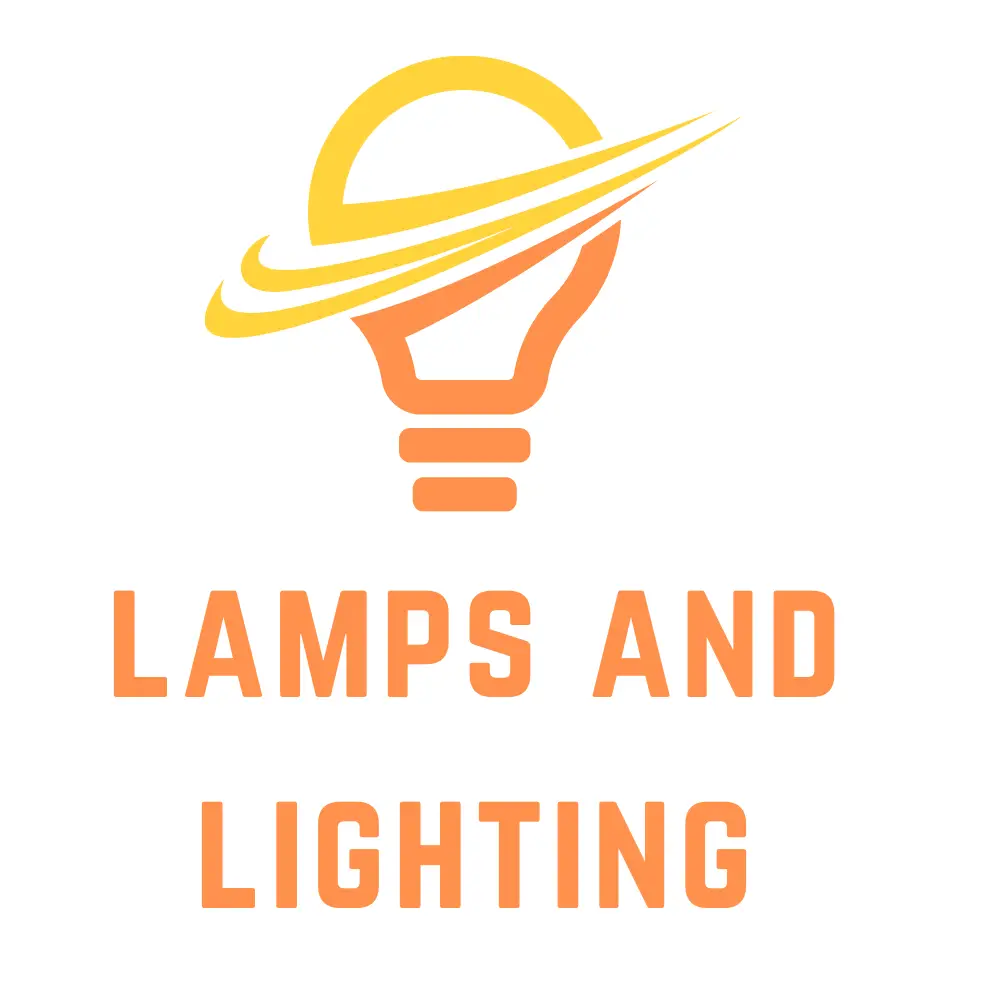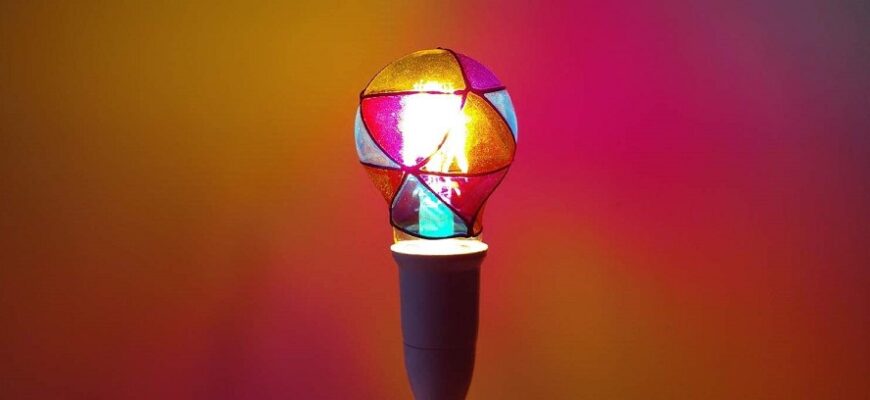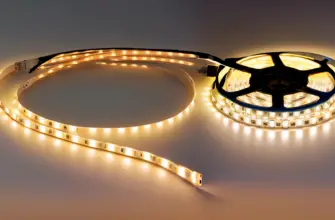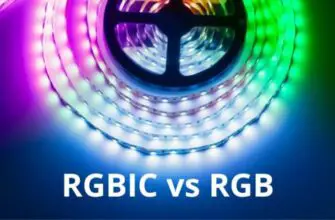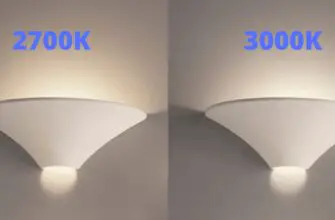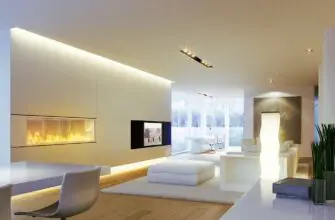Welcome to the world of Sharpie light bulbs!
If you’re looking for a way to add some color and magic to your home or office, these light bulbs are a perfect choice. Not only do they bring a unique, vibrant look to any space, but they also provide the perfect ambiance for any occasion.
From cozy nights to festive gatherings, colored bulbs can help create the perfect atmosphere. Read on to learn how to paint a light bulb with a Sharpie marker and explore ideas for your creative designs.
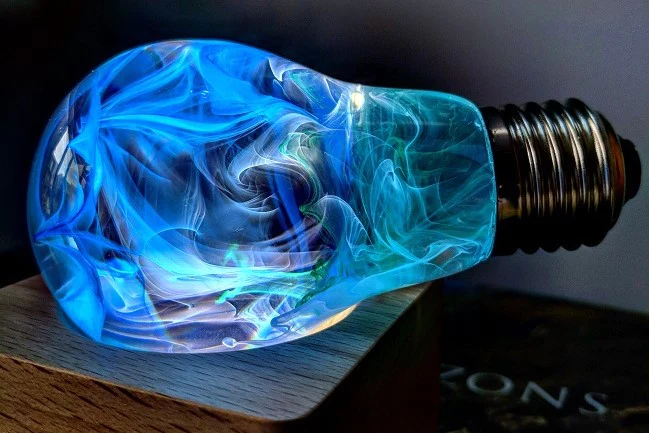
What is the ‘Sharpie light bulb trick’?
The ‘Sharpie Light Bulb Trick’ is a simply painted bulb. All you need is a Sharpie permanent marker and a white bulb. Simply paint a light bulb with the marker, and depending on the color you’ve chosen you can create a different but always mesmerizing atmosphere.
Decorated bulbs are perfect for relaxing hours, in the auxiliary lamps in the living room, or even in children’s rooms.
If you going for an extremely opaque painting, like landscape paintings. Decorating old light bulbs is an incredible choice. For such projects, any old light bulbs will do. Not only is it easy to do, but it also won’t cost you a penny!

Can I use Sharpies on LED lights?
Sharpies are a great way to personalize and decorate many surfaces and objects.
If you are looking to paint a light bulb with Sharpie, remember to use caution. LED bulbs are extremely sensitive and require a special coating to ensure the Sharpie marker won’t damage the clear bulb.
Before applying Sharpie ink to LEDs, make sure you are using a light-safe coating, such as a clear sealant or a thin layer of epoxy.
This will protect the painted bulb from any possible damage caused by the Sharpie marker.
It’s also important to make sure the ink is completely dry before turning on the bulb. If your Sharpie ink is not completely dry, the heat and electricity from the LED lights could cause the ink to smudge or melt, potentially damaging the lights.
What can you use to color a light bulb?
When you want to add a bit of fun and flair to make your lighting stand out, one great option is to paint a light bulb. But what can you use to color a light bulb? The answer is simple: Sharpies!
Sharpie markers are perfect for adding a bit of color to any regular light bulb! All you have to do is carefully color the surface of the bulb with the marker. Allow the marker to dry and then put the bulb in the socket.
You’ll be amazed at the vibrant colors that appear when you switch the lights on.
Coloring light bulbs with a sharpie is a great way to add a creative and unique touch to any room. Plus, the process is easy and doesn’t require any special tools or skills.
So why not give it a try today?
Exploring different color possibilities with markers and paint pens
Markers and paint pens are great tools to paint a light bulb. Whether you’re coloring in a coloring book, drawing a mural, or adding detail to a model, they can be the perfect way to bring your artwork to life.
But what kinds of colors are available with markers and paint pens, and how can you use them to create a truly unique look?
You can combine colors to create interesting effects. Try layering colors, such as a deep, dark navy blue and a bright, sunny yellow. Or, mix colors to create a unique shade, such as light pink and dark purple.
The combinations are endless and can add a unique element to your artwork.
So, if you’re looking to add a unique touch to your project, don’t hesitate to grab a few markers and paint pens and start exploring different color possibilities. The results can be truly magical!

Types of light bulbs that are safe to color with paint
Paint can be used on many types of light bulbs, but it is important to choose the right type of bulb to ensure the longevity of the paint job. The most important thing to remember is that consider using a 40 watts white bulb.
Here are the types of light bulbs that are safe to color with paint:
- Incandescent bulbs. Incandescent bulbs are the most common type of light bulb, and they are safe to paint bulbs. incandescent bulbs are more fragile than other types of bulbs, so they may be more prone to damage if the paint is not applied correctly.
- Halogen light bulbs. Halogen bulbs are another type of light bulb that is safe to use with paint. but as incandescent bulbs, halogen bulbs generate a lot of heat, which can cause the paint to flake off over time.
- LED light bulbs. LED bulbs are energy-efficient and long-lasting, and it is safe to paint LED light bulbs. Unlike other bulbs, LED bulbs have low heat levels, energy sufficiency, and durability that offer additional hours.
- CFL light bulbs. CFL bulbs are also energy-efficient and long-lasting, and they are safe to use with paint.
- Fluorescent light bulbs. Fluorescent bulbs are not recommended for use with paint, as the paint may not adhere properly.
When selecting a type of paint for your light bulb project, it is important to consider the type of bulb you are using. With the right type of paint, you can create a unique light bulb!
How painting on the light bulb will affect its lifespan?
Painting on a light bulb with Sharpie can harm the bulb’s longevity.
The heat generated by the bulb can cause the paint to flake and chip away, exposing the delicate glass to air and dust.
The paint particles can also build up inside the light bulb, reducing the amount of light that is emitted and causing the bulb to burn out sooner. In addition, the paint can cause the light bulb to become less efficient, consuming more energy and ultimately leading to an even shorter lifespan.
How to paint light bulbs with sharpie markers?

Painting light bulb with sharpie markers is an easy, fun, and creative way to add a vibrant touch to your home decor.
It’s a great way to express your style and create something unique that you can show off to your friends. Plus, it’s a great activity to do with the kids, as they’ll love to see the results of their hard work come to life.
A decorated bulb is great for relaxing hours. Put it on the bedside table in the bedroom, children’s room, or auxiliary lamps in the living room.
Whether you choose to add a few simple shapes and patterns, or go all out and create a complex work of art, here is a detailed procedure to help you make sure your design lasts:
- Start by giving a clear or white bulb a thorough clean with a paper towel and some rubbing alcohol or glass cleaning liquid. This will help to ensure a smooth, even surface for your design. On top of that, it would be an excellent idea to use tape to protect the bulb parts that should not get painted.
- Once the light bulb is completely dry, you can start painting. draw whatever design you desire on your light bulb with Sharpie.
- Allow the paint dry for a full 24 hours. This will help to ensure the design is permanent and won’t come off when the light bulb heats up. Also, roll it over after the paint dries to ensure an even finish.
- To make sure the design is securely sealed, use a clear coat sealer spray. This will protect your design from fading or wearing away over time.
- Allow the sealer to dry for 24 hours before using the light bulb.
And there you have it! Now you can enjoy your light bulb with a unique and colorful design that you created yourself. Have fun and let your creativity shine!
Safety warning: don’t forget to turn it off!
It is essential to remember to turn off your light bulbs when they are not in use. This simple step can help prevent hazardous situations from occurring, as the bulbs can become dangerously hot if left plugged in for extended periods.
Remember to check that you’ve used a white or clear bulb. Wipe the bulb clean, then start the simple cleaning process with rubbing alcohol or glass cleaning liquid.
We would suggest picking a bulb of 40 watts or less. That way, the risk will be lesser and the result will be better. Note that the light bulbs are built in a way that will release the excess heat through the glass. This means, the surface itself typically works as a heat dissipation device. Use painter’s tape to create a border around the bulb.
Finally, be sure to store the light bulbs in a cool, dry place and away from any sources of heat.
Types of paint you can use to transform a light bulb

Adding a splash of color to a clear bulb can be an excellent way to make your lighting stand out from the rest.
There are a few different types of paint that can be used to customize a light bulb, and each has its own unique set of advantages.
For large-scale projects, spray paint can be a great choice for quickly and evenly coating a surface. In addition to spray paint, regular paint can also be used to color a light bulb.
- Acrylic paint is a widely available option that is easy to clean up, and it is also water-resistant once it has been applied. Furthermore, acrylic paints are also more affordable than oil-based paints and have good extremely opaque designs like landscape paintings.
- Heat-resistant glass paint. This heat-resistant paint is specifically designed to withstand the heat generated by a light bulb, making it a great choice for painting plastic bulbs. Heat-resistant glass paint is usually water-based and comes in a variety of colors.
- Water-based paint. Water-based color is a great way to color a light bulb. Water-based paint is easy to apply and clean up, and it is also water-resistant once it has been applied. It is a great choice for creating a vibrant, long-lasting color.
- Special heat-resistant paint. Special heat-resistant paint is formulated to withstand the heat generated by a light bulb, making it a great choice for painting plastic bulbs.
With these types of paint, you can achieve almost any desired effect with a light bulb.
Can you paint a light bulb with permanent markers?
Using permanent markers, such as a Sharpie, to paint a light bulb is possible, but not recommended. The heat generated by a light bulb can cause the ink to break down and release toxins into the air. Even if the ink doesn’t break down, the paint may flake off and get into the bulb’s filament, causing it to malfunction.
For a safer alternative, consider using a special paint designed specifically for bulbs.
This type of paint is designed to withstand the heat generated by the led bulb and won’t release any toxins into the air. Additionally, it won’t flake off and get into the bulb’s filament, making it a more reliable option.
How do you dye a light bulb with a Sharpie?
You can dye a light bulb with a Sharpie by coloring the outside of the bulb with a marker. Make sure to cover the entire surface of the bulb with the marker, going around the bottom and top of the bulb as well.
It’s important to be thorough when coloring the bulb, as any sections that are skipped may not end up having the desired effect.
Let the marker dry for a few hours or overnight before turning on the light, as this will help ensure that the color sticks to the bulb.
With the right care and attention, you can create a unique, one-of-a-kind light bulb that can add a special touch to any room.

Creative projects with Sharpie-decorated lights
With a Sharpie and some creativity, you can create beautiful and unique lights that are sure to add a unique touch to your home.
From lighting up your living room to creating a stunning centerpiece for your next dinner party, Sharpie-decorated bulbs are a great way to make a statement.
Whether you’re a beginner or a more experienced artist, Sharpie-decorated bulbs offer endless possibilities for personalization and customization.
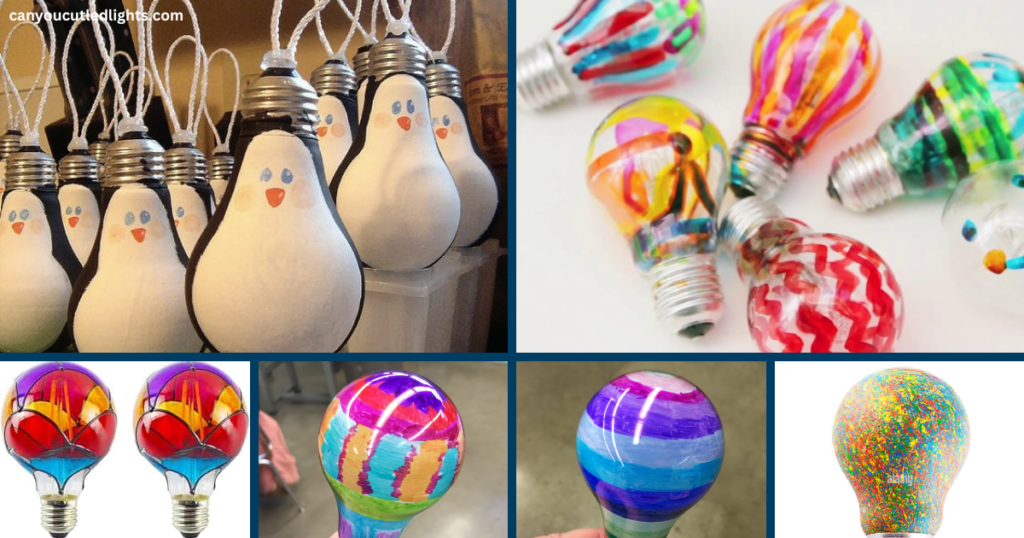
When choosing the right color for your Sharpie light bulb project, consider the existing décor of the room you’re decorating. The possibilities are endless!
Before you paint a light bulb with Sharpie, you’ll want to wipe the bulb clean and dry. Use a paper towel to wipe away any dust or dirt, and be sure to allow the bulb to dry completely before you begin. Also, roll it over after the paint dries to ensure an even finish. This will help ensure the design will last for years to come.
Once you’ve created your design, you’ll need to attach the light bulb to a base. This can be done using traditional light bulb sockets or using specialty light bulb bases that allow you to easily attach the bulbs to the wall or ceiling.
Once your bulbs are attached, you can use them to bring a unique, creative touch to your home. Place them in your bedroom or living room to create a cozy atmosphere or hang them in your kitchen or dining room to add a touch of whimsy to your meals.
No matter where you choose to display them, Sharpie-decorated bulbs are sure to add a unique and personal touch to any space.
To keep your Sharpie-decorated bulbs looking their best, use a clear coat of sealant over the design once it is finished. This will help protect the design and ensure it will last for years to come.
Additionally, you can use LED bulbs or low-wattage bulbs in your light fixture to reduce energy consumption and ensure your design will look its best.
Finally, the possibilities for Sharpie-decorated bulbs are virtually limitless! With a little bit of creativity, you can create stunning works of art that will bring a unique style to your home. So, grab your Sharpies and get creative!

Conclusion
Painted bulbs offer a unique way to get lit and make your space magical for relaxing hours. With the ability to customize colors, patterns, and shapes, you can create a truly one-of-a-kind lighting experience. Whether you’re looking for a fun way to liven up a party or just want to add some color to your home.
So go ahead and get creative with your lighting – you won’t regret it!
Also Read About Removing Permanent Marker From Your Skin
FAQ
Can I Sharpie LED light?
A permanent marker is an ideal method for coloring bulbs. When Sharpie appears on your mind, then your plan should go smoothly. Sharpies work well with these lamps. They will never bother you permanently because alcohol can easily be removed.
What can you use to color a light bulb?
If you want to paint led light bulbs with different shades then stained glass paint cans are your best choice. Coverage is smoother and more consistent with painting.
How do you do the magic light bulb trick?
For the lighting of your new magic lamp, put a ring of long metal ties in the middle of your “magic” finger. Holding the led bulb so the ring touches the bottom of them. When you hand it over to your friends to inspect, it’ll go out. Is it magical?
Can I remove the Sharpie designs from the light bulb and start over?
While it may be challenging to completely remove Sharpie ink from a light bulb, you can try using rubbing alcohol or nail polish remover on a cotton pad to gently erase the design. Keep in mind that the bulb’s surface may still retain some staining.
Can I use LED or energy-efficient bulbs for Sharpie light bulb projects?
Yes, you can use LED or energy-efficient bulbs for Sharpie light bulb projects. LED bulbs generate less heat than traditional incandescent bulbs, making them safer for use with decorative elements. However, always follow the bulb’s specific guidelines to ensure safety.
Can I use any type of Sharpie marker to decorate a light bulb?
Most types of Sharpie markers, including regular, oil-based, and permanent markers, can be used to decorate light bulbs. However, oil-based markers are recommended for better adhesion and longevity of the design.
